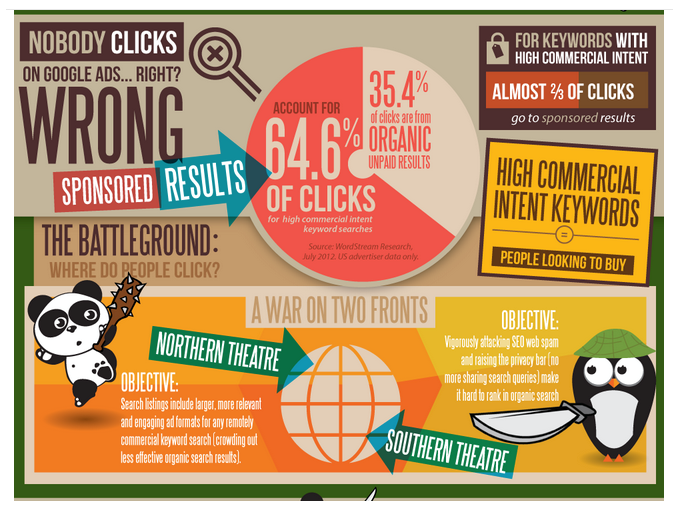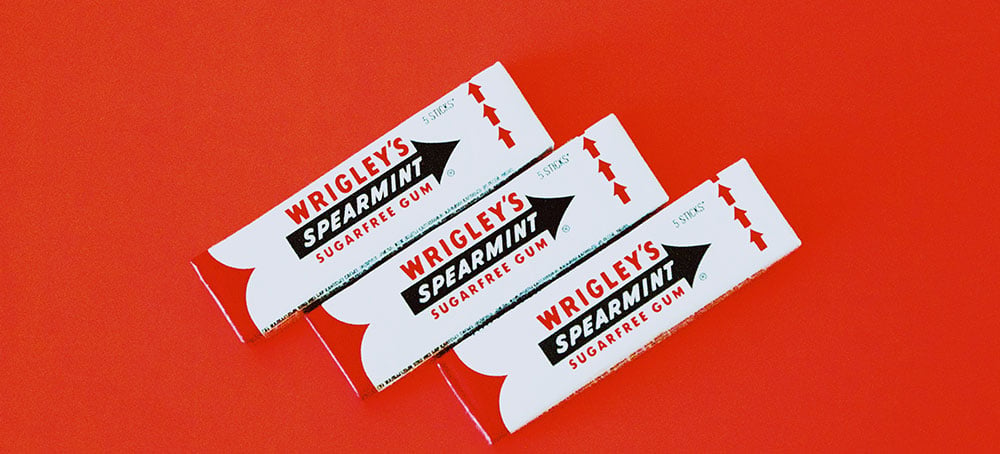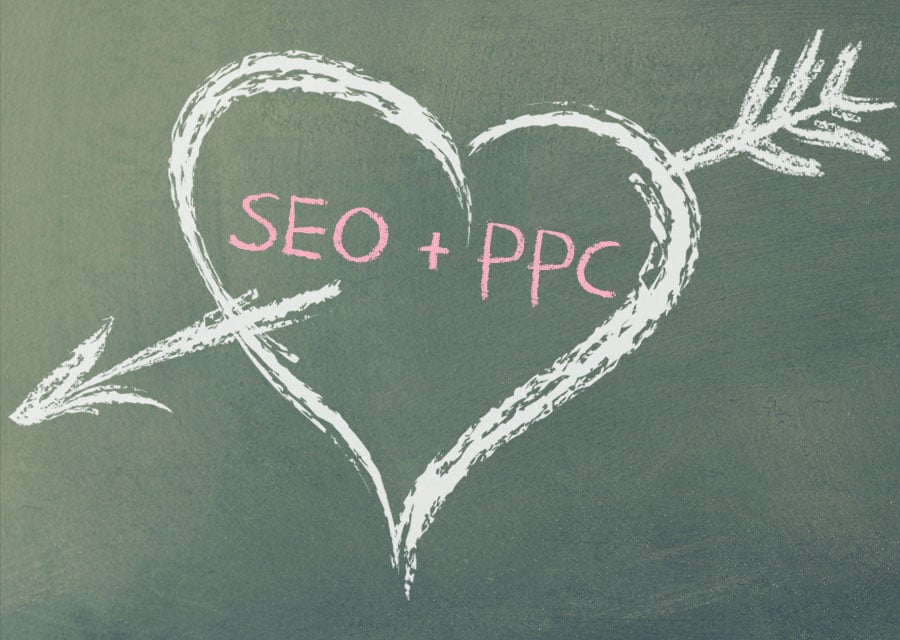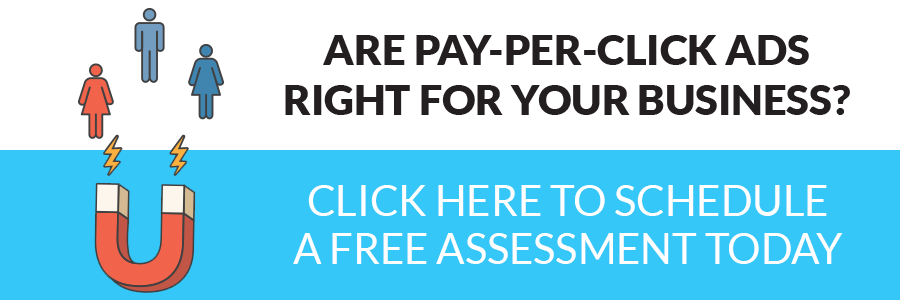How to Use Google Ads to Drive Growth in 2020 - Part 2
If you haven't read Part 1 yet, click here
The pre-go stuff is the most important part. Let’s go over the pre-go stuff.
- Figuring out what keywords attract clicks to your landing page. You can put your money on any of the trillion or so keyword possibilities in the Googleverse. But only a select few will bring the right crowd anywhere near your buy button.
- Figuring out what elements you need on your landing page to convert browsers into buyers. This step is pretty important because you pay for 100% of the clicks on your ad, but you only make money when one of those clicks ends in a sale.
How the heck do I know what keywords to bid on for my ads (AdWords)?
With Google’s Keyword Finder.
There are hundreds of tools out there you can use, but most require an actuarial science degree with a minor in cartography and a complete disregard for user interface design. Be glad you’re here, because we evaluated the winners and tossed the losers in the trash.
Google Keyword Finder is a great tool for finding keywords that have a good volume but a low competitive score. But the easiest way to put your finger on a keyword winner is by copying your competition.
Reverse engineer!
Humanity has progressed by taking things apart, seeing how things work, and putting things back together better than before. Reverse engineering your keyword competitor’s strategy also works here. See what’s working for your competition and do it too—but do it better. Use the Google Keyword Finder. Enter a competitor’s domain that hits one of the top spots in Google Search and see if something they do looks good to you.
How the heck do I improve the quality of my clicks?
With negative keywords. And by setting your location.
Negative keywords
A lot of search queries aren’t relevant to your offer. And you don’t pay for clicks unless those clicks are relevant! To keep things nice and relevant, insert negative keywords (from your Google AdWords dashboard). Negative keywords prevent selected search terms from triggering your ad. If you don’t want your ad to appear when someone uses the word “free,” add free as a negative keyword. Your Google AdWords conversion rate will improve because your steered non-converters away, which improved your CTR, which lowered your CPC. Decrease ad spend, increase ROI.
Set location
If you have a bricks and mortar store, set a radius around your location. That way, if someone googles what you sell but they live in a different city, your ad won’t appear. If your store is online (ecommerce), set your location around where you will ship to. If you offer a service that is available to anyone anywhere, the sky’s the limit.
How the heck do I know what part of the sales funnel to target?
By knowing thy customer. And by looking at the behaviour of your audience.
Get to know your ideal customer so you can create content that feeds their wants (display ads) and solves their needs (search ads). What are their interests? What do their demographics look like? Run the customer persona test so you deliver the right message to the right person at the right stage of the sales funnel at the right time.
Take a look at Google Analytics to figure out your audience. If Audience Behaviour shows that you have way more new customers than returning customers, you need to spend more money at the top of the funnel, with ads that help new customers get to know your brand (Display!).
![]()
A top of funnel campaign builds awareness and trust about your product/service. Your search ad will pop up when someone searches with a who, what, why, when, where, or how question about your product.
- What do I need to... (solve X).
- Where can I find...
- How do I…
- When should I...
These customers are just poking around. So give them a great education! Answer those questions on your landing page, make them feel cozy about being there, and hook them with an offer that nudges them a little closer to the bottom of the funnel. The ROI on a top-of-funnel campaign is lower but the trust you create can go a long way toward a conversion later. Display ads work great here.
Bottom of the funnel ads are based on long-tail keywords with a purchase intent. These ads are transactional, meaning someone has done their research and they’re ready to buy. But they don’t yet know who they will buy from.
- How much…
- Where can I buy…
- Who can I hire for...
Transactional ads usually experience lower volume and less competition so an ad here costs less. These are specific and difficult to nail, but your AdWords ROI is a little better. Search ads are great for purchase-level queries. Bid on keywords that show commercial intent. And go for sponsored ads!
“People click Google ads no matter where they’re positioned. But, when your ad is placed in a premier position, you’ll get a higher CTR on your ads. For keywords with high commercial intent, almost ⅔ of clicks go to sponsored results for higher Google AdWords conversion rates…Sponsored results account for 64.6% of clicks for high commercial intent keyword searches.”
according to Larry Kim of WordStream

What exactly is the difference between a search ad and a display ad?
Search Ads

Search ads appear at the top of Google’s result page. The top four spots are reserved for search ads. You’ve seen them, but you may not have realized they were ads. They are text-based search results that appear above the organic search results. They have a sneaky, little “AD” symbol in front of them (otherwise you might think they earned their spot there organically).
Search ads cater to the intention of the searcher. If a searcher intends to find an all-natural pet shampoo, they will google “all-natural pet shampoo.” If your search ad was built on the longtail keyword “all-natural pet shampoo,” it will get served to that user. But if you bid on the keyword phrase “organic dog shampoo,” your ad may not get served. That’s why keyword research is so important.
How do you know what intent to base your keyword on?
Start with Google Keyword Finder, then go to Moz Keyword Explorer. See how a keyword phrase you’re thinking of does organically.
“To create better search ads, start by searching your keywords on Google to analyze intent. See what the organic and paid results look like, and then double check the organic CTR in Moz’s Keyword Explorer. This will help you analyze which strategies are driving clicks and whether or not the intent to purchase is there.”
Display Ads
Display ads don’t cater to search intent at all. They go to work on remarketing. Remarketing is like tapping someone on the shoulder out of the blue to remind them about something they were looking at earlier...your product or service.
Display ads are the image-based sidebar or banner or facebook-type ads that appear to users when they are anywhere at all on the internet looking at any given thing at any given time. Display ads are there in your browser suddenly and they make you push your brows together and crunch your teeth a bit because you know Google dropped a crumb when you were thinking about buying a thing elsewhere earlier but didn’t. Then out of nowhere, when you’re reading about magnetic whiteboards, you are reminded about that linen-white Crate & Barrel plate set that caught your eye first thing this morning because Google served you up a display ad. Annoying, but effective. ‘Cause, dangit! I want those plates after all.
Caveat: the conversion from a display ad is less than 1% across all industries. The industry that benefits the most from display ads are home goods (those Crate & Barrel plates) at just over 2%. So why bother?
Bother because display ads create a feeling of indirect want. Display ads work by dropping little “want seeds” in your brain. They focus on the top-funnel awareness of a thing. Use display ads to offer something free and valuable so people get to know your brand. Use display ads to get people to your sales funnel with an enticing free offer. Use display ads to tap your customers on their shoulder many times, because it takes many shoulder taps before the average person buys a thing. Most people get to know that thing first. And they get to know the company that makes that thing. And they get to know your competitors. They shop around.
Your goal is to get those customers to come back to you after they consider their options. Coming back increases the odds that they will buy your product this time. Studies show that the more someone sees your ad (increasing ad impressions), the higher your chances are of converting that someone.
Recap: Search ads work on direct need, showing up when someone googles something specific. Display ads show up as reminders to consider your product again (offering something valuable to you if you click the ad wherever you happen to be).
Your Google Ads can be weighed, sir. Oh yes!
Track your keywords!
If one of your keywords is a boob, click pause on that ad. You don’t have to drown with a dud that destroys your Google AdWords hopes and dreams. You can plug that cash-siphoning hole like McGuyver with half a stick of Wrigleys.

But! If one of your keywords takes off like a greyhound on chocolate... give it more chocolate. If people are clicking on one of your ads, put your resources on that ad so that people click the holy hell out of it.
How the heck do I know what ads worked the best to convert strangers into paying customers?
By tracking your customers with conversion codes.
How do you get your ad in front of someone again who has already shown interest because they’ve clicked to you before?
By tracking them.
You slip a tracking code into their pocket when they show interest (click an ad or a button). Sneaky and highly effective, a conversion tracking tool shows you how many leads you got from an ad and how many sales you converted from that ad.
What conversion tactics (lead magnets) get the most clicks? Is it your free webinar? Your ebook? Your coupon?
Tracking shows your return on that specific investment.
“Well, that sounds complicated!”
Yes. It is a bit. It’s complicated like shoelaces are complicated compared to velcro. But at some point, you need to graduate to the big boy shoes and tie a big, fat, monetizing bow.
And this is how you tie a big, fat, monetizing tracking bow:
- Link your Google Analytics (GA) account to your Google AdWords account. Don’t have a GA account? Get one. Then go to your Google AdWords dashboard and link to GA. Why? Because GA records the actions that people take on your website after an ad-click so you can track conversions.
- Now we get really nerdy. It’s time to turn on the power of UTM codes.
You set up UTMs in your Google AdWords dashboard. Google uses UTMs (tracking modules) to track specific details using a specific link code. You’ve seen them before but called them “gobbledygook.” The UTMs follow the base of a URL with ?UTM and then… a bunch of gobbledygook.
But Google doesn’t see UTMs as letter porridge like we do. Google sees the shiny keyword that drove a click and where your traffic came from. It sees what device a user was on when they clicked your ad, and what your ad position was at the time of click. It measures activity within the string of infinite characters. It shows what offers are converting so you can see what’s working best so you can optimize your Google Ads.
*Great big asterisk: Set up your UTM codes when you start a Google AdWords campaign. If you don’t, you’ll have to do manual UTM work for each URL and that’s a pain in the neck.
- Turn on conversion tracking. What does that mean? It means add a script to your website that allows Google AdWords to track how many people bought stuff from you or signed up on your form. Without doing this part, parts one and two hold their pants and jump up and down outside the bathroom door, but you won’t open the door so they can pee in your toilet. Instead, they pee all over the floor. Yuck! And stupid.
What good does it do you if you can see that you are getting conversions (Google AdWords Conversions tab) but you don’t know why you got those conversions or how many of those conversions were because of your Google Ads?
Conversion tracking is essential to a successful Google Ads campaign. So click “conversions” on your Google AdWords dashboard and follow the instructions to install your site tag on every page of your website and an event snippet for each campaign that tracks individual conversions (these go on your “thanks for buying” pages only).
How the heck do I know what parts of my landing page work the best?
By split testing your landing page elements using conversion codes.
Try out multiple header titles and different body copy to see which version creates the most clicks.
What button got more clicks, the orange one or the yellow one?
Give each element a conversion code and switch to the one that shows more success. You’ll see your Google AdWords Quality Score improve (because Google takes into consideration user experience on your landing page).
A quick look at Quality Score:
Google measures how many people click on your ad when it appears (CTR). Your Click Through Rate depends on how well your ad matched a searcher’s intent. How well your ad matches search intent depends on how relevant your keywords are, if you ad matches that keyword, and if the landing page matches your ad (user experience).
When your QS goes up, your advertising cost per click goes down (because those clicks are converting), your ad exposure goes up, and your ad sees a better position in display and search.
Always always always make sure that your ad copy matches your landing page headline and body copy. The landing page must be an exact match to the ad (directly relevant). If someone clicks your ad and jumps to your page and that page doesn’t deliver on what the ad said, you’ll cause confusion, get a bounce, and ruin your conversion opportunity. Up a creek without a paddle (even though you had the chance to pack a paddle). Make the ad the same as your landing page. That’s good UX. Good UX helps conversions.
And that’s conversion tracking.
Not super easy, but worth the effort if you can follow instructions, paste some code, and click some buttons. For a step-by-step walk-through on how to set up conversion tracking on your website, check out this helpful Google support page.
Other things you need to know going into your campaign:
- Your budget. Write it down. How much money will you spend on Google AdWords? What is your maximum bid? What amount are you will to pay per click on your ad? The higher your bid + the value of your offer (Quality score) = a better ad rank. The better your ad rank, the better your placement, the more people see your ad, the better your chances of converting.
- What is your profit goal? Don’t worry about the number of conversions so much as what you put in the bank after the cost of the good sold.
- How much time do you have for day-to-day monitoring (to realize when chewing gum or chocolate is required)? If you pay someone to watch your graphs, factor that in to the cost of the good sold.
It’s go time!

Plug into the power of Google AdWords and start making money like this: Click, land, like, buy, track, optimize.
Your conversion rate depends on your keywords, your ads, and your landing pages. The better your keyword is, the more you’ll get in front of the right people. The better your ads are, the better your chances of getting a lead to your landing page. The better your landing page, the greater your odds are of turning that lead into a paying customer. The better your conversion tracking, the easier it is to optimize. Optimization is more money in the bank.
Here is a top-ten recap on how you can successfully use Google AdWords to drive growth in 2019:
- Pick the rifle over the shotgun (laser focus not a spray of shot).
- Copy the keywords that make your competition money (Google Keyword Finder and Moz Keyword Explorer).
- Use negative keywords and set your location in AdWords to improve the quality of your ad clicks.
- Use Google Analytics to see if your audience is mostly new or returning so you know what part of the sales funnel to target.
- Get to know your ideal customer so you can create content that feeds their wants (display ads) and solves their needs (search ads).
- Make sure your search ads target the right audience (search intent).
- Make sure your display ads offer value and nudge people to your page with a great offer.
- Make sure your landing page headline matches the keyword you bid on and match your ads to your landing page message.
- Track your keywords: Have your wrigleys and your hersheys ready (plug the money drain when a keyword poops out and boost keywords that go gangbusters).
- Track your ad success and split test your landing page with conversion codes to optimize your Google AdWords campaign.
If your Google AdWords campaign under-performed in the past, apply these tactics and try again.
Tally ho, muchachos!
Table of contents
Share this
You May Also Like
These Related Stories

Why I Don’t Love Twitter Ads for B2B Lead Generation

Mastering SEO in 2025: The Updated Guide to Ranking and Driving Traffic



